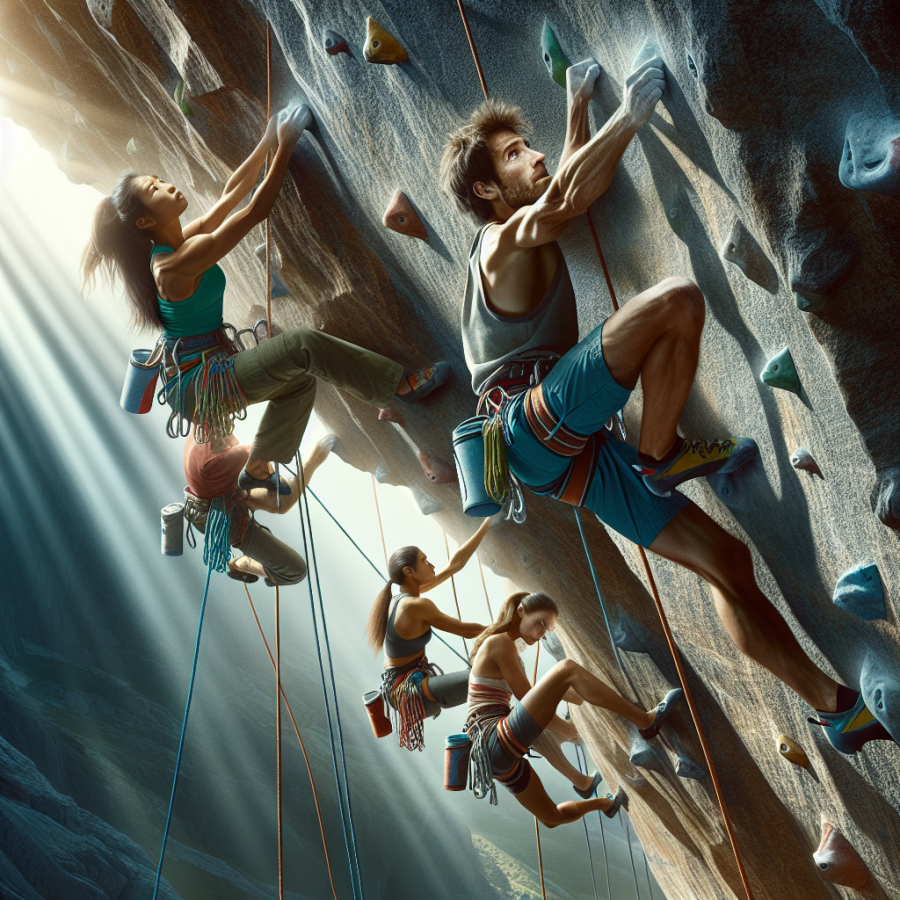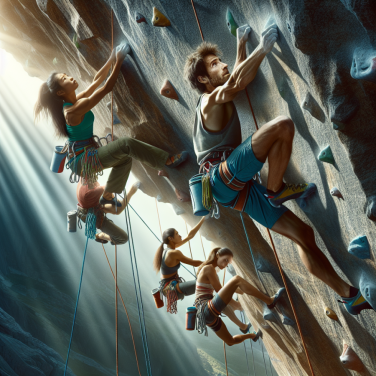Redefining Personal Limits: The Rise of Sport Climbing Popularity
As sport climbing ascends in recognition and participation, it is no surprise that personal boundaries are continuously redefined. This ascendancy to popularity can be attributed to a number of factors, not least the sport's inclusion in international competitions and its growing mainstream appeal.
Historically, climbing was often seen as an extreme sport, reserved for the daring few who sought to conquer untamed mountain faces. However, sport climbing has transformed this perception, creating accessible avenues for individuals to challenge themselves in a controlled environment. With climbing gyms sprouting up in urban centers around the world, the sport has become more approachable, encouraging a diverse range of participants to strap on harnesses and scale walls that replicate the natural formations found in the great outdoors.
The physical benefits of sport climbing are a substantial draw. It builds upper body strength, improves stamina, and enhances flexibility. But perhaps more intriguing is the mental discipline it cultivates. Climbing requires focus, problem-solving, and the ability to remain calm under pressure. As climbers push their own limits, they often experience a tangible sense of accomplishments which translates to increased confidence in their daily lives.
The community aspect of sport climbing also contributes to its rising popularity. Unlike many competitive sports, climbing often fosters a supportive ambiance where more experienced climbers mentor newcomers. This camaraderie is evident in climbing gyms where cheers and advice echo off the walls, and extends to outdoor climbing spots where strangers commonly share equipment and words of encouragement.
Another significant factor in sport climbing's rise is the adrenaline rush it offers. The thrill of the climb, the challenge of gravity, and the chance to literally hang in the balance provide a unique blend of excitement and fear. For those who thrive on physical challenges, sport climbing offers an exhilarating outlet that is both risky and rewarding.
Furthermore, the digital age has played a notable role in popularizing sport climbing. Social media platforms allow climbers to share their conquests and failures, building a global community that inspires others to try the sport. Moreover, the high visibility of climbing in movies and documentaries has added a glamorous sheen to what was once considered a niche activity.
The future of sport climbing is poised for even greater growth as it becomes entrenched in global consciousness. With each new wall that is climbed, personal boundaries are redefined, and the definition of what it means to push human limits is rewritten.
Read also:
Conquest and Crowns: A Deep Dive into the Kings League Phenomenon
The Physical and Mental Challenge: Mastering the Art of Vertical Ascents
Sport climbing offers enthusiasts the unique ability to test their boundaries in an environment that challenges both mind and body. The pursuit of vertical ascents is not merely about reaching the top; it is a comprehensive journey that demands physical strength, flexibility, endurance, and mental resilience.
The physical demands of vertical climbing are as diverse as the routes themselves. Climbers use a wide variety of muscle groups, from the powerful pull of the biceps and back muscles to the grip strength of the forearms and the push of the legs. Core stability is also crucial as it helps climbers maintain balance and control while navigating through complex moves. This sport also requires excellent cardiovascular fitness to sustain prolonged periods of climbing, as a single route can keep the climber engaged for significant lengths of time.
Flexibility is another physical aspect that cannot be understated. Climbers must often reach, bend, and contort their bodies in ways that demand extensive flexibility. The ability to maneuver one's body into the right position can be the difference between successfully completing a climb and taking a fall.
Sport climbing also puts the climber's mental fortitude to the test. Fear of falling, fear of failure, and the mental exhaustion from problem-solving can take a significant toll. Climbers must develop the ability to push these fears aside and focus intensely on the task at hand. The route in front of them is a puzzle that requires full mental engagement for success.
Decision-making is crucial; a climber must constantly evaluate the best route, the right grip, and when to conserve energy or push forward. This mental game is ongoing as the climber ascends, requiring the ability to remain calm under pressure and adapt to changing conditions on the route.
Climbers also practice visualization techniques—imagining the ascent and each move before physically undertaking them. This mental rehearsal primes the climber, helping with confidence and reducing hesitation when performing complex sequences of moves.
The interplay between the physical and mental aspects of sport climbing is what makes it incredibly rewarding. The satisfaction derived from overcoming the challenges of a climb speaks to the very essence of the sport. As climbers push past their previous limits, they experience growth not only as athletes but also as individuals who have conquered fears and surmounted mental barriers.
In the world of sport climbing, the highest peak isn't always a physical summit—it's often the triumph over the personal mountains of doubt and physical limitation. Each ascent, regardless of outcome, is a lesson in resilience, perseverance, and self-discovery.




